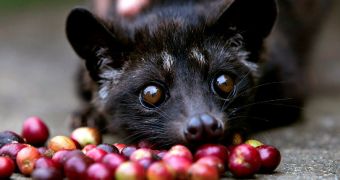Several conservationists now warn that, as the global demand for the so-called civet dung coffee increases, the wild civet population will start to decline up to the point that the species will run the risk of becoming extinct.
For those unaware, civet dung coffee (also known as kopi luwak) is a type of coffee made from coffee beans that have passed through the digestive tract of civets (i.e. small mammals native to tropical Asia and Africa).
When people first started drinking kopi luwak, they would simply go looking for the coffee beans left behind by civets that came to feed on plantations.
According to Mongabay, an increase in the number of people that drink this coffee has ultimately led to these animals' being captured, stuck in cages and being made to eat coffee beans.
Chris Shepherd, a conservationist who has recently published a paper concerning the kopi luwak industry and its impact on the wild civet population, made the following observations:
“Originally, the dung-covered beans were collected in coffee plantations but more recently, as more people wanted to drink coffee made from beans that had passed through the intestines of this small carnivore, entrepreneurs have begun sticking civets in cages, feeding them coffee beans and recollecting them from the dung for wholesale.”
“Reportedly, as demand rose, other civet species were captured and added to these captive civet coffee makers,” Chris Shepherd further explained.
Since the civet species targeted by the kopi luwak industry are not yet listed as threatened or endangered ones, those wishing to buy and sell them need not worry about how their actions might go against ongoing legislations.
Given the fact that several civet species have already lost parts of their natural habitats in favor of humans, Chris Shepherd fears that the kopi luwak industry will do nothing more except give these species one more push towards extinction.
The conservationist's study concerning the future of the remaining wild civet population was published in the journal Small Carnivore Conservation.

 14 DAY TRIAL //
14 DAY TRIAL //